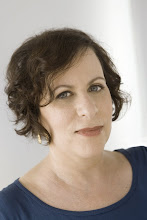PhotoNOLA 2011 Wrap Up
I was there for the first time in 2008, and this year was so much better for me. I felt much more engaged, and by now, many of the other reviewers, and some of the photographers are friends, so I had a wonderfully social time.
I arrived Thursday for the fundraising gala, a party with fantastic food, music and great bargains on prints during the auction. It was my chance to hang out and meet new people while wishing I could own a lot of what was being sold.
On Friday I was able to go to the Insectarium, something I wasn’t able to do last time. I love insects, so it was a blast—I even got to eat some, which is something I wanted to do. The rest of the day was spent hanging out and eating, exactly what you expect to do in New Orleans.
Saturday and Sunday were all-day portfolio reviews. I saw some fascinating work and had a chance to meet other professionals I hadn’t met before. I know there is a lot of debate as to the value of portfolio reviews. I think they can be wonderful: a chance for photographers to get fresh eyes on their work, a chance to get face-to-face sit downs with high quality professionals, and a chance to meet and talk with other photographers. Yes, it will cost money. But aren’t you and your career worth it?
There are those who feel that reviews are a “pay for play” type situation, and you shouldn’t have to pay people to show them your work. I think it’s important to understand where that money goes. It goes to the organization that puts on the event (and putting together PhotoNOLA isn’t easy, and it isn’t cheap), and it goes to bringing the professionals to New Orleans. The reviewers are not paid, but their airfare and hotel are comped. I think that’s a pretty good deal all the way around.
Now if a photographer isn’t ready to be reviewed (their work is not far enough along), or they are not prepared with good work that is well presented, and don’t have both the ability to talk about their work and to hear what the reviewer says to then, then yes, maybe the reviews are not a good idea. But since most photographers work alone, in a sort of creative vacuum (especially if they are not in big cities), there is so much to be gained that I can’t support the review process enough.
Some of the work I saw that really stood out:
Patty Carroll’s study on domesticity:"Anonymous Women."

Christopher Chadbourne’s "State Fair"

Stephen Chalmers’s landscapes of serial killer murder sites

Alex Leme’s small town America project

Robert Llewellyn’s gorgeous "Seeing Flowers"

Calli McCaw’s boys jumping off the Coney Island pier

Sunday evening I was honored to be asked to moderate a panel called: “Picturing War,” which focused on the work of Sebastiano Tomada Piccolomini, Ashley Gilbertson and Jungeun Lee—three photographers showing alternate ways of depicting conflict. It was quite an emotional and engaging panel for all of us—panelists and audience. For my part, it was an unexpected and intensely emotional experience.
Ashley showed his work and featured the “Bedrooms of the Fallen,” a deep and moving portrait of the rooms of soldiers in the US and Europe who were killed in Iraq and Afghanistan. By projecting the work on a large screen you couldn’t help but feel as if you were in the rooms, and that made it all the more poignant. And Ashley’s fierce passion for his work and to the soldiers who struggle with returning to civilian life with PTSD, or who commit suicide brought us all to tears. You had to ask yourself: What am I doing to help these people?
Jungeun Lee’s "Silenced Suffering" about the Korean women who were kidnapped and forced to be sex slaves to the Japanese soldiers during WWII was extraordinary in its detail and execution. Jungeun had grown up in Korea never hearing about this—only when 200 of the estimated 200,000 women who suffered began to testify in public did she learn about it. Her anger was so intense, it took her a year to begin to figure out how to express it visually. Jungeun’s attention to detail, and talk about what she chose to focus on and how she came to it was incredible. I am in awe of her creative process and wish I could have seen the complete installation (I saw a portion of it on display in a gallery in town).
For the closing dinner we were invited to the studio of Josephine Sacabo, a gifted fine art photographer who specializes in the photogravure process. It was such a treat to see an artist studio while in town and it was the perfect end to the festival. I found myself sitting at a table across from Jessica Lange—not what I had expected.
So I have to thank everyone who put this wonderful festival together: especially the great Jennifer Shaw, whose book, "Hurricane Story" is one of my favorites. I had such a great time meeting and talking with, among others, David Bram, Brian Clamp, Jennifer Schwartz, Andy Adams, Bill Schwab, Holly Hughes, Bevin Bering Dubrowski, Kyohei Abe, Roy Flukinger, Charles Guice, Neil Harris, Maggie Kennedy, Alexandra Le Faou, Claire O’Neill, Gordon Watkinson, Ann Pallesen, Mary Virginia Swanson, Sasha Wolf and Gordon Stettinius. I wish I could have spent time with everyone.
So mark this on your calendar for next year, and I hope to see you there!
all photographs copyrighted by the individual photographers
Labels: ashley gilbertson, jennifer shaw, jungeun lee, photography festival, photography portfolio reviews, PhotoNOLA, sebastiano tomada piccolomini, stella kramer, stellazine












